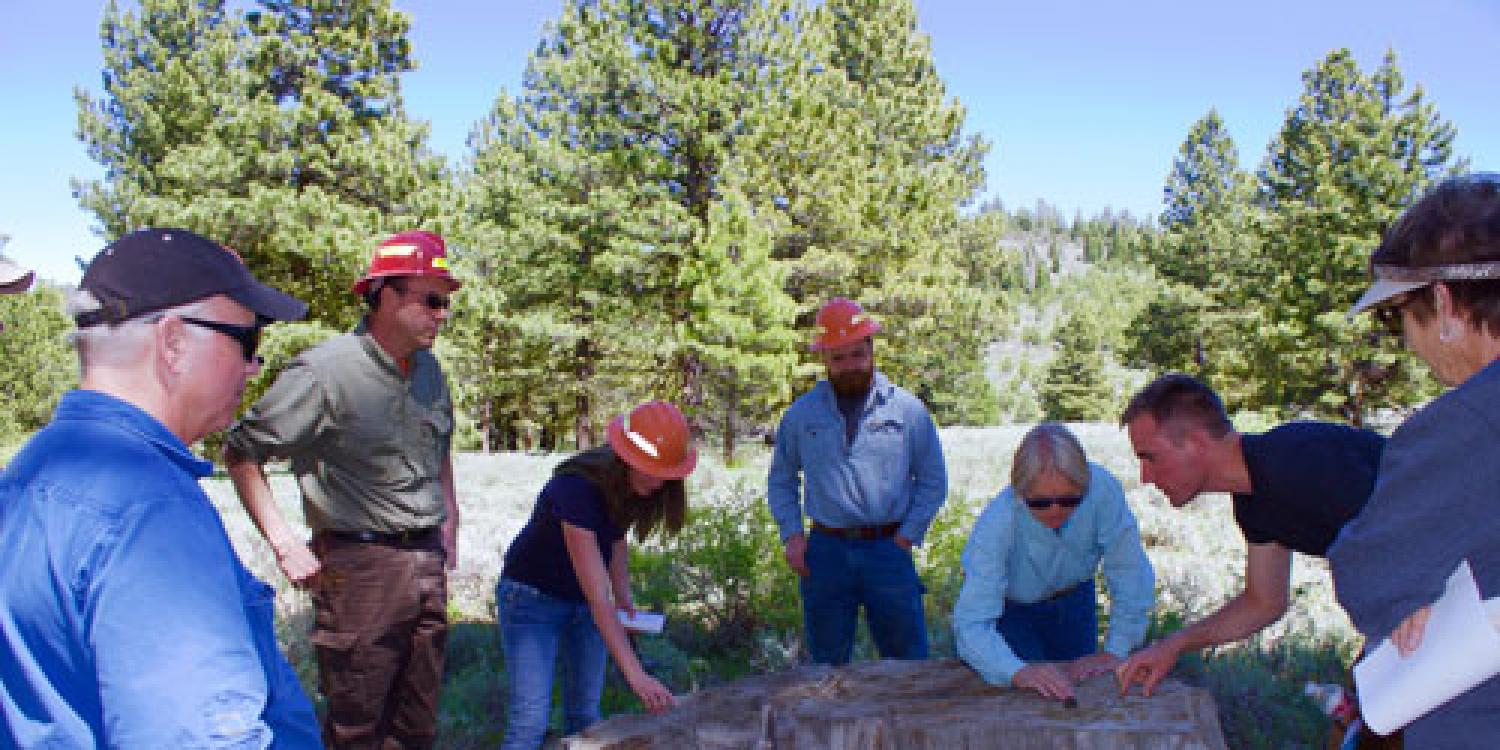
Federal agencies, state government, collaborative groups and businesses have been attempting to increase the pace and scale of restoration in fire-adapted forests east of the Cascades in Oregon. But achieving landscape-scale outcomes has been challenging. Forest collaboratives have typically focused on identifying agreement at smaller scales, and agency planning and management across ownerships is growing but limited.
Go Big or Go Home?, a project of the Institute for Working Landscapes in the Oregon Forest Research Laboratory and the U.S. Forest Service Pacific Northwest Research Station, explored the effects of different restoration strategies on forest conditions and fire behavior, with a focus on the forested landscape of central Oregon.
The interdisciplinary research team modeled several landscape scenarios that used different restoration strategies. Scenarios were developed by members of the Deschutes Collaborative Forest Restoration Project and reflect the interests and values of a diverse group of stakeholders. Each strategy employed restoration treatments – including tree harvesting and thinning, prescribed fire and managed natural fire – at different magnitudes and in different places on the landscape. Strategies were distinct in how they prioritized wildfire protection, wildlife habitat, forest products, and restoring historical forest conditions.
Simulating those different scenarios using a computer model of forest growth, forest management, and wildfire built for the central Oregon region, the researchers found that doubling or tripling the current rate of restoration and fuel treatments on U.S. Forest Service land would have a small effect on the amount of high-severity fire at the landscape level over a 50-year period.
This is because the probability of a wildfire and a fuel treatment being in the same place on a landscape is low, a relatively small part of the landscape has effective fuel treatments at any point in time, and expansive areas of the landscape are not available for restoration treatment because of physical, ecological, or administrative reasons.
Among the project’s other findings:
- By prioritizing treatment along roads instead of increasing treatment, fire size and severity would be reduced.
- The modeling showed that if all restoration treatments are stopped, the area burned and severity of fire across the landscape increase significantly.
- Restoration strategies that include fire – prescribed fire and/or managed natural ignitions – are more effective at reducing wildfire severity at stand and landscape levels than those that use mechanical means alone, such as forest thinning.
- There isn’t a “one-size-fits-all” solution. The effectiveness and need for restoration treatments varies with forest environment, topography, vegetation type, and spatial location. Ultimately, in fire-prone landscapes, many of the values we hold for our forest landscapes are adapted to – or are dependent – on fire.
- All management actions, including no action, result in tradeoffs between values that we have for forests. These tradeoffs may not only be between commodity values and ecological values but also between different ecological values. For example, dense versus open forests.
- Restoration has other benefits other than improving resilience to forest fire, including promoting resilience to drought, creating habitats for wildlife species, potentially enhancing recreational opportunities, and/or promoting increased water yield and quality.